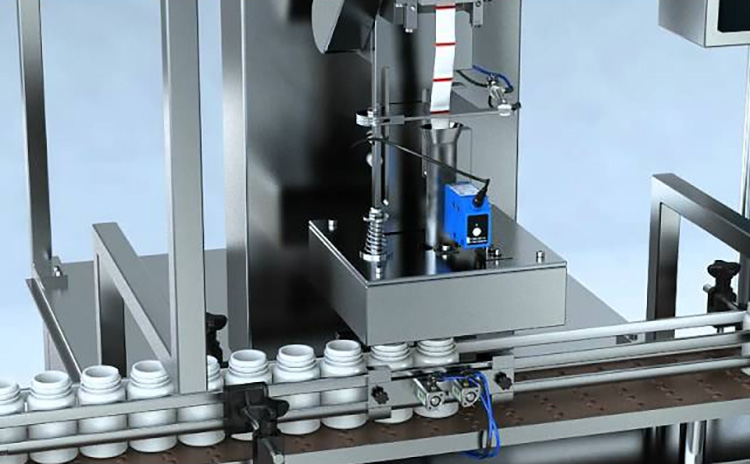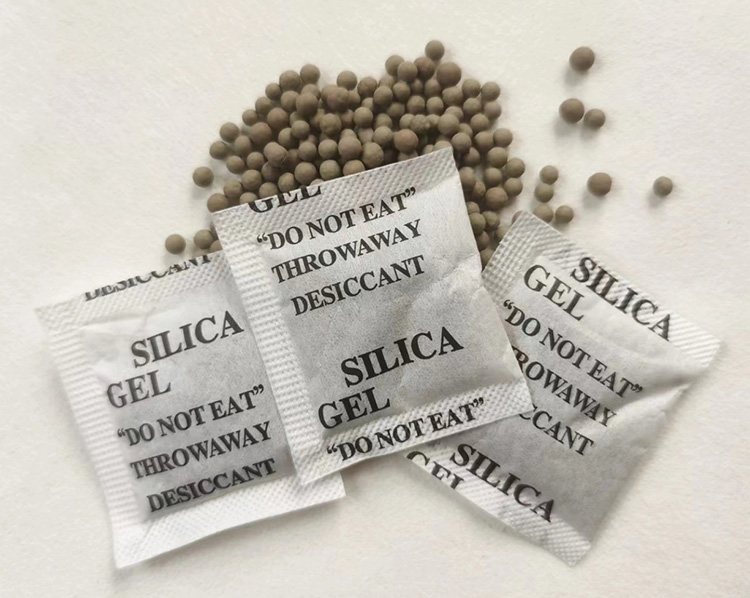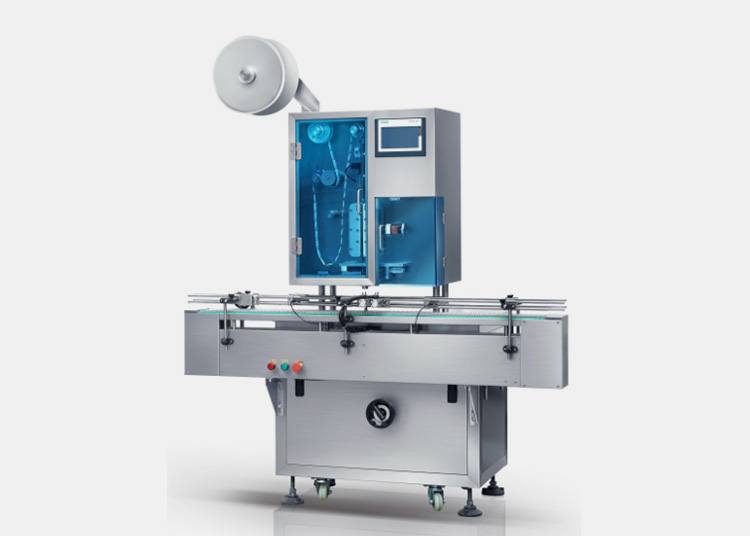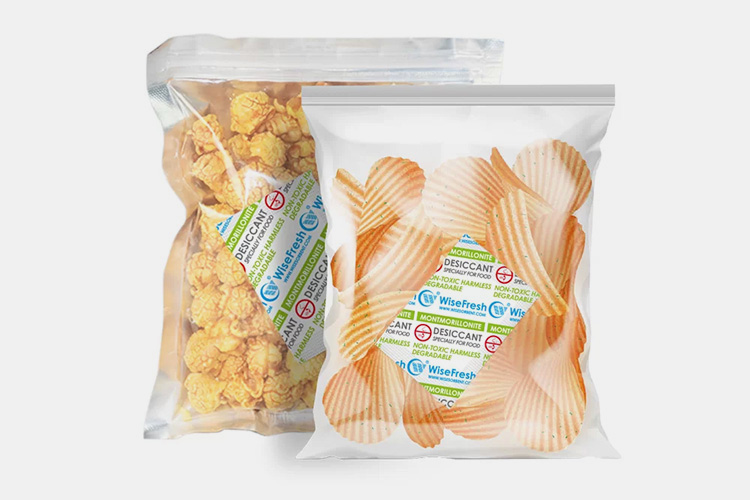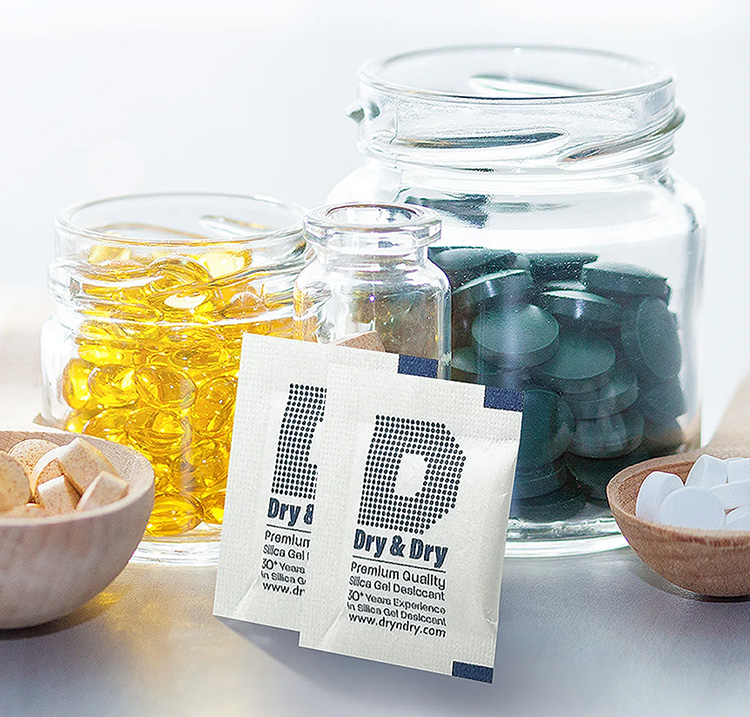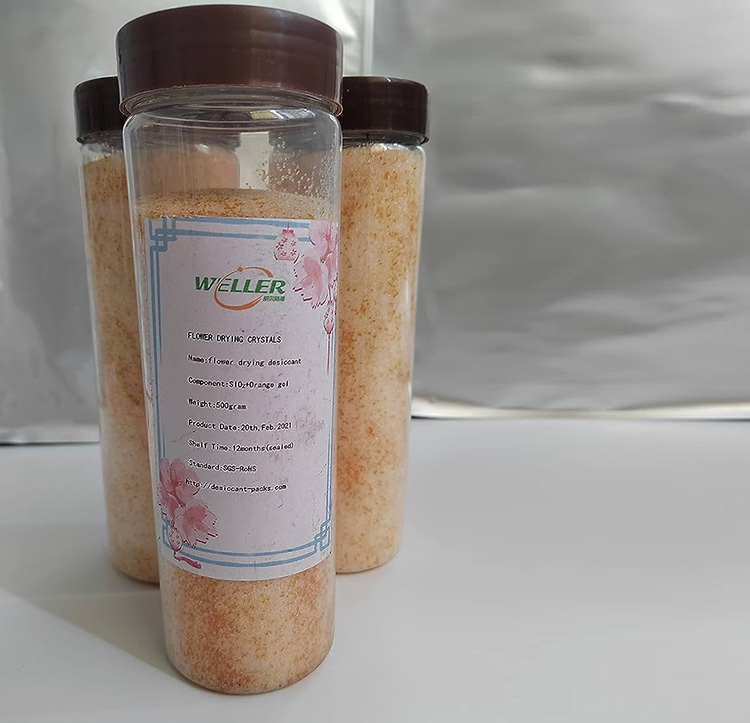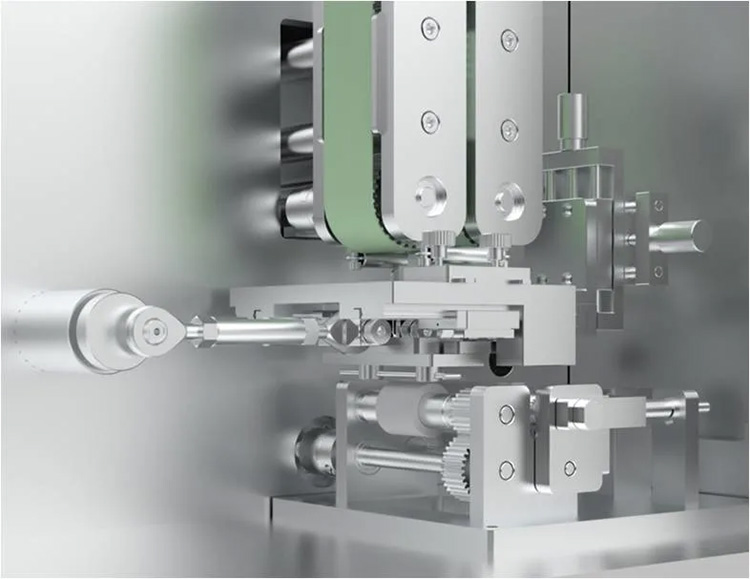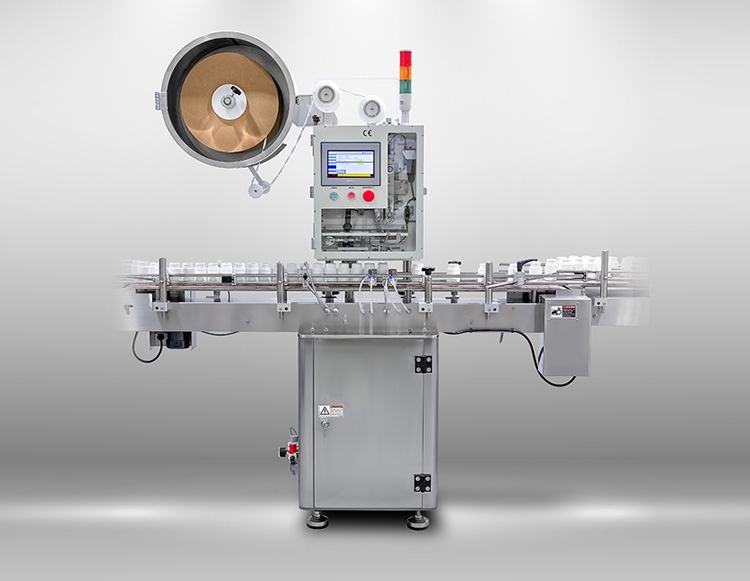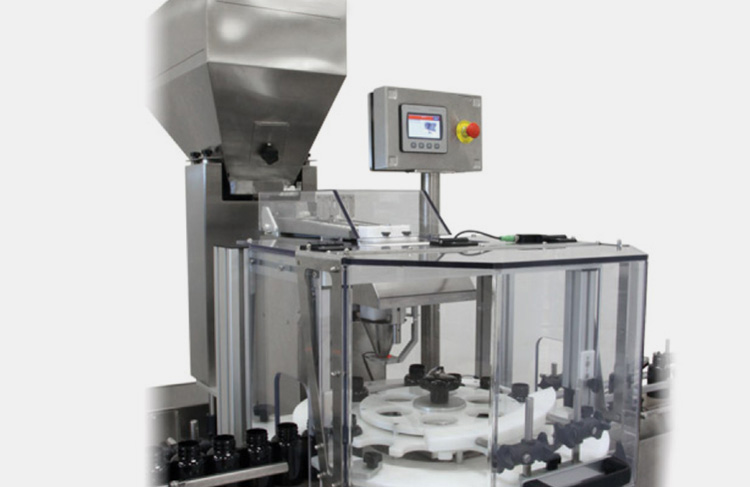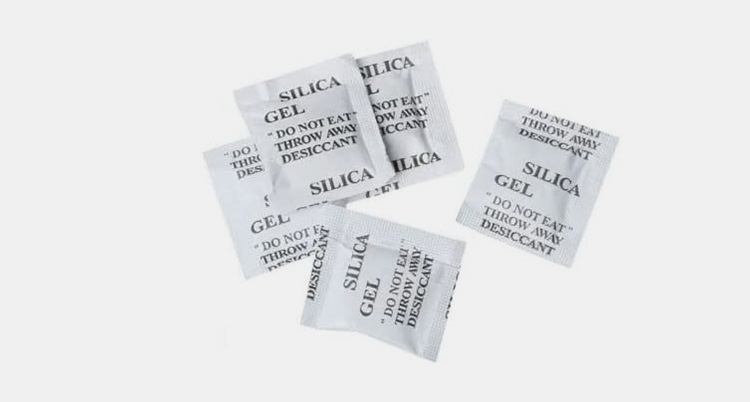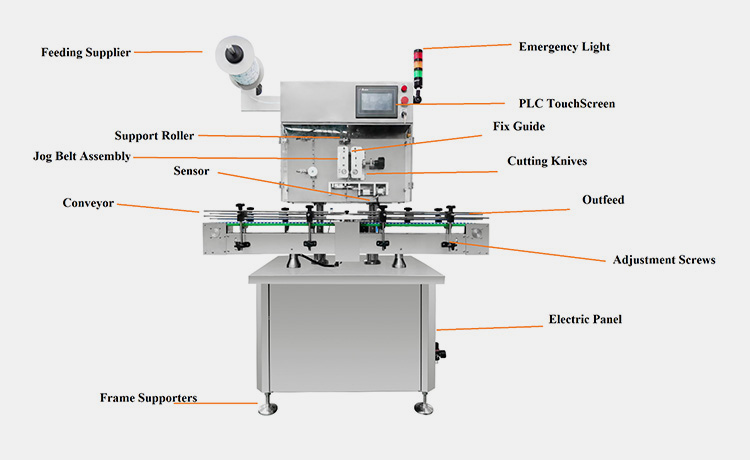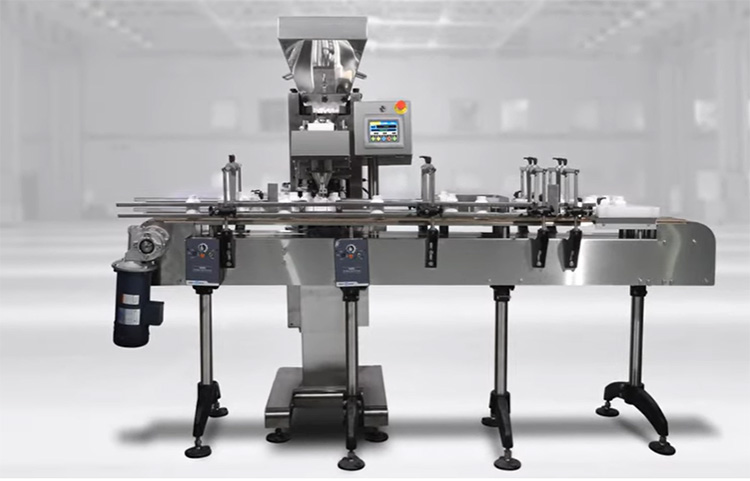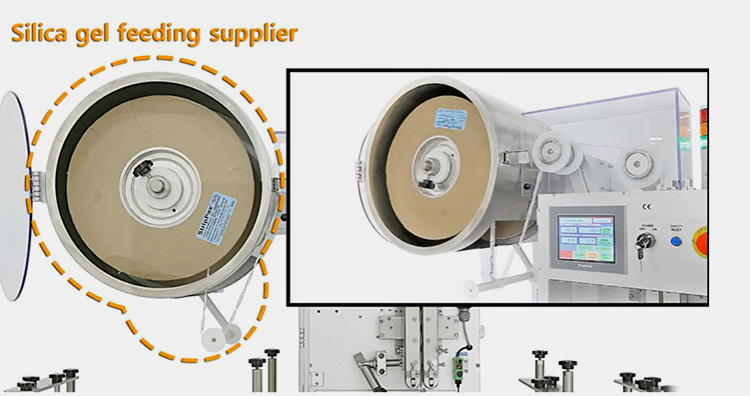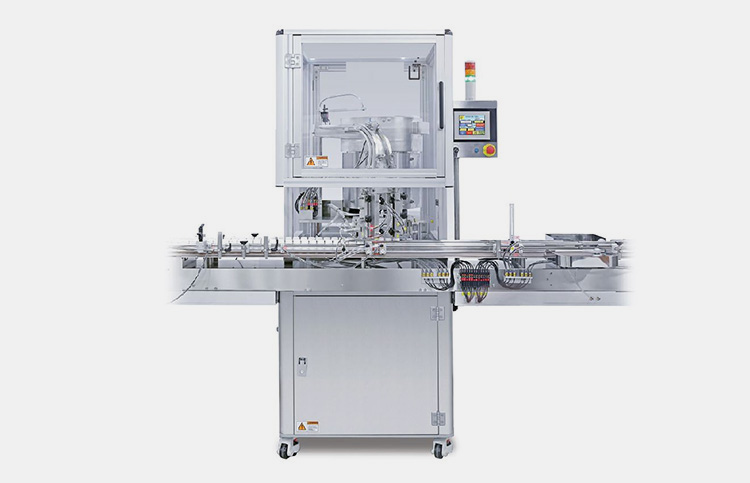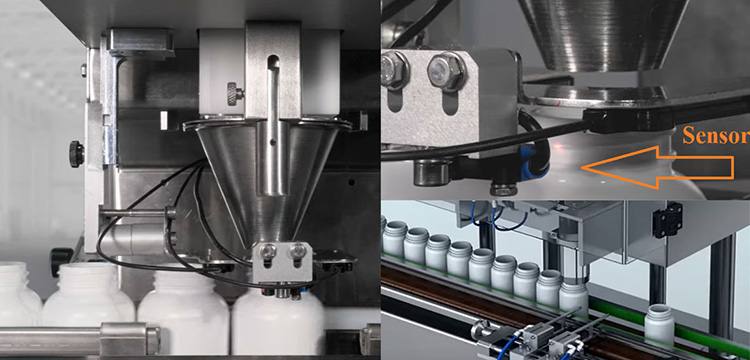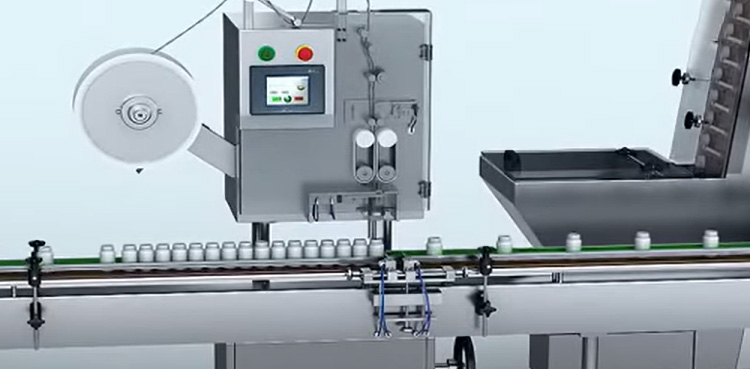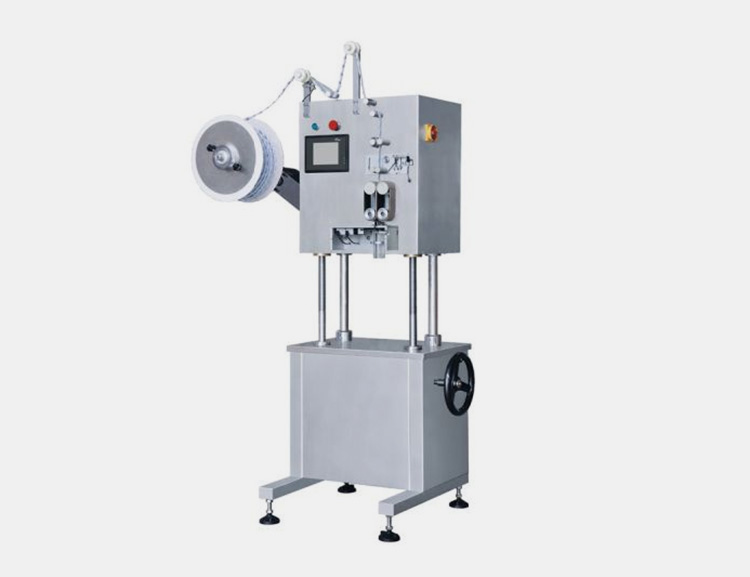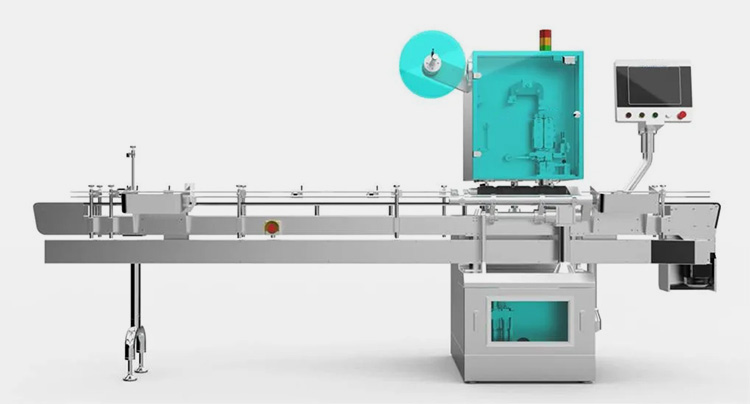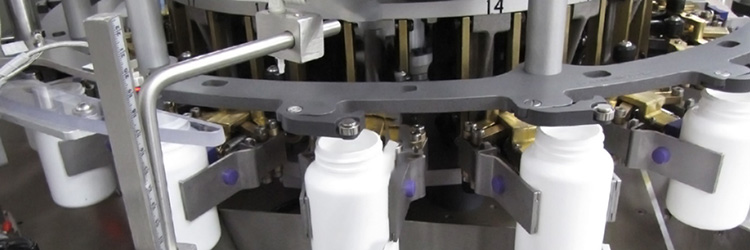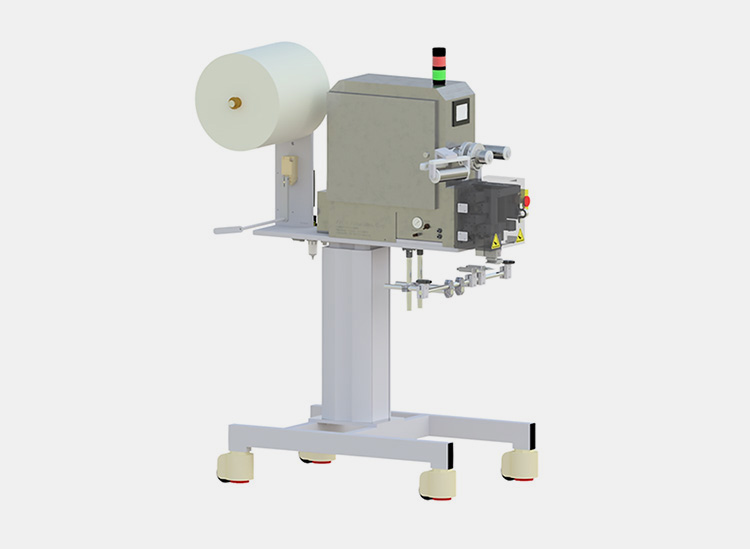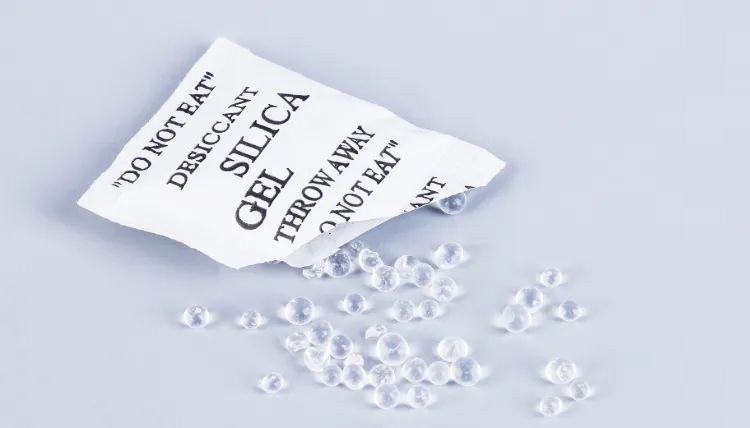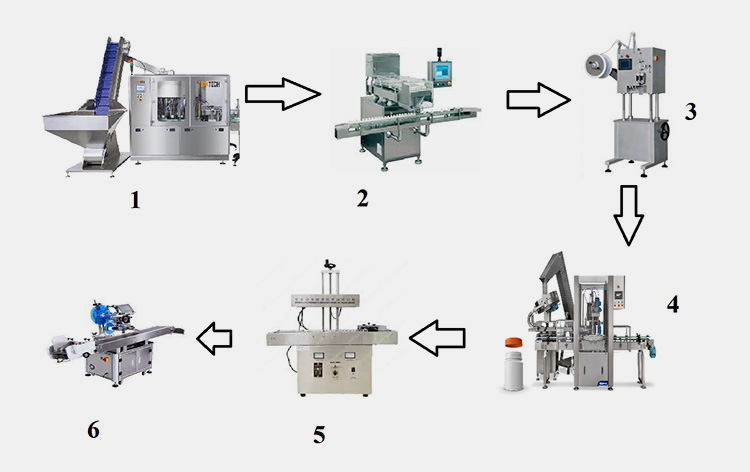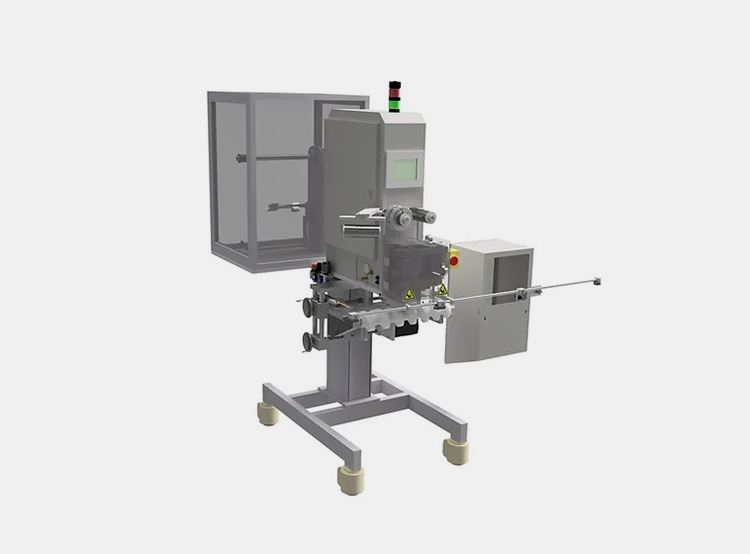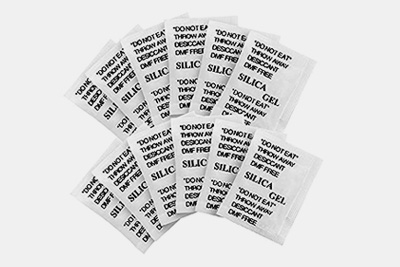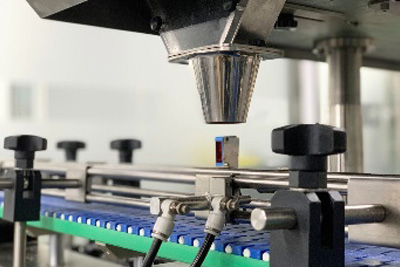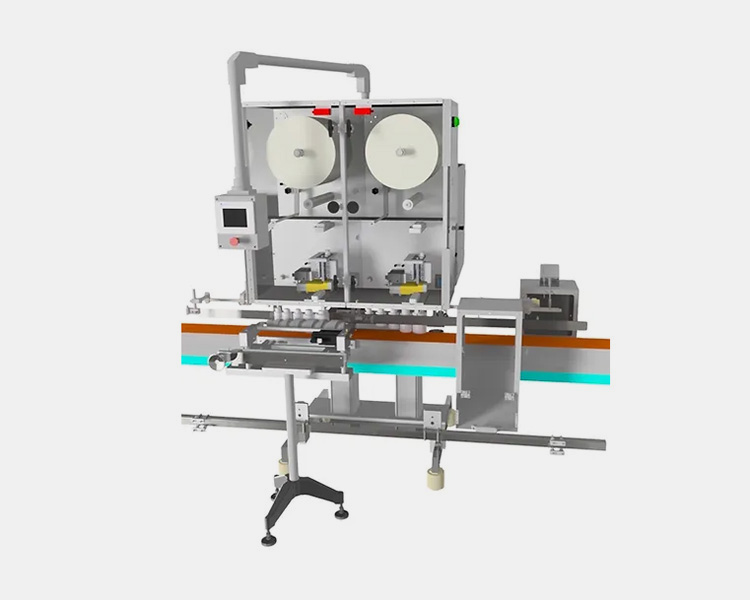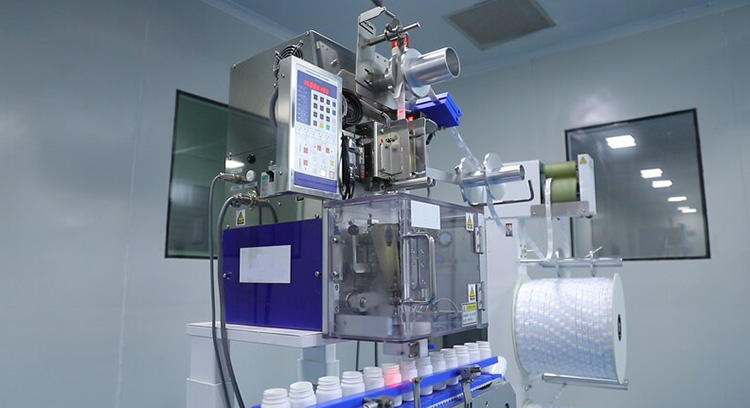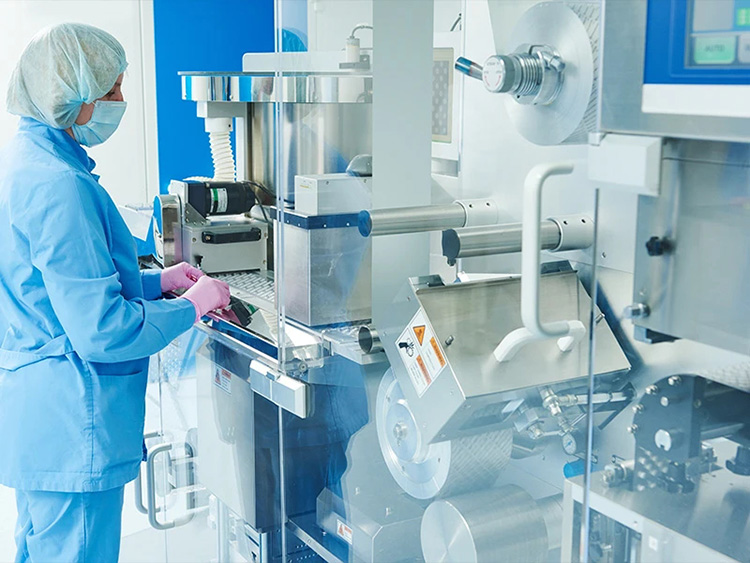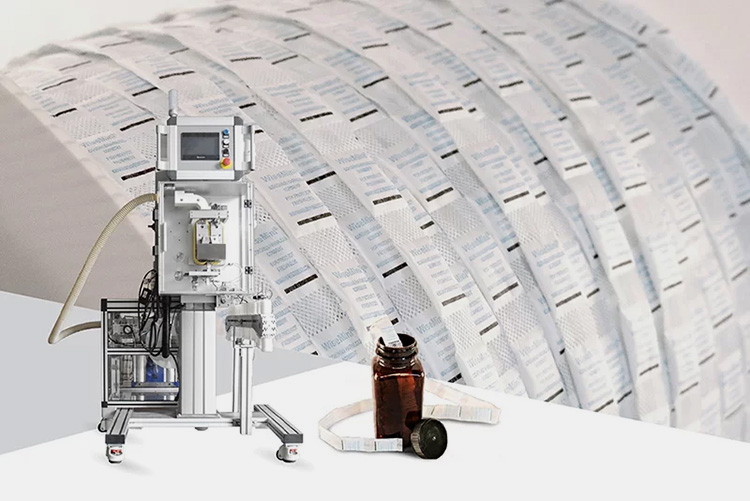Desiccant Inserter: The Complete Buying Guide in 2025
Ever wondered how various products are maintained with freshness, quality, and proper shape? The answer is very simple! A desiccant inserter that takes your business to a high level by sustaining the impeccable integrity of your product for a longer time.
Today, where entire manufacturing and packaging industries face intense challenges, a desiccant inserter is a game changer that helps in offering what you look for. Now, do not worry about intense temperature, humidity, and other factors, because a desiccant inserter is growing in popularity as it can sophisticatedly place a desiccator inside each container and prevent against humidity. Looking to purchase a desiccant inserter? This is the right place for you! Go through this article and find answers that will help you grab the right machine.
1.What Is a Desiccant Inserter?
A desiccant inserter is an advanced device which is designed to insert desiccant into products in order to extend their shelf life. Most of the products require desiccants as it helps in absorbing extra moisture present in the inside atmosphere of the material. By this, it improves protection against progression of microbial growth such as fungus, spores, or bacteria.
Desiccants are mostly composed of silica gel that has affinity to absorb humidity present in the surrounding. That’s why, this is commonly inserted in the medicinal packaging, food packaging, and other. Because these sectors are mostly concerned with maintaining stability and quality of the products. A desiccant inserter is useful machine in this way that speed up the process by automatically sensing the presence of packaging container and placing an individual strip inside each packaging and allow them to move to the next machine. This machine is typically works in an integrated way or packaging production lines offering a seamless operation.
2.Where Is a Desiccant Inserter Used?
A desiccant inserter has various applications on the industrial sector. Some of them are discussed below.
Medicine Industry
A desiccant is used to keep medicinal products safe and effective against moisture content. For that reason, a desiccant inserter is used to ensure that production processes are carried out smoothly and rapidly.
Food Industry
Food products such as breads, chapatis, dry-fruits, spices, sugar, rice, or related grains, snacks, etc needs to be dry to maintain taste, fragrance, and quality. Food industries are equipped with desiccant inserter to keep food packaging effective till end-user.
Nutraceutical Industry
Picture Courtesy: Dryndry
Nutraceutical industry deals with manufacturing and supply of nutraceutical items such as vitamins, proteins, enzymes, that are also prone to oxidized in the presence of moisture content. This is why, desiccant inserter is used to place desiccant inside packaging of nutraceutical products to prevent humidity and damages caused by moisture during transportation.
Cosmetic Industry
Moisture is the culprit behind damaging cosmetic products. That’s why products like powders, bars, creams, lip-glosses, etc. should be kept in a dry environment. For that, manufacturers and packaging industry use desiccant inserter to keep their product safe from moisture-related problems.
3.What Are the Benefits of a Desiccant Inserter?
When it comes to placing a desiccant inside products; it is much more difficult to handle manually or alone. Today, desiccant inserter has occupied an eminent place in competitive sector due to mentioned below benefits:
Machine Cuts and Places Desiccant Automatically
Desiccant inserter shows fast automation in the term of detecting containers, cuts the pack from the roller strip, and position each strip inside the container. If there’s any problem whether in container or strip; machine rejects the products and transfer them into the rejection unit.
Flexible Integrate to Production Line
Picture Courtesy: ValueLink
This is an adaptable machine that allows flexibility in the term of setting with other machines so production line can be speed up following right configuration as required.
No More Labor Cost
Picture Courtesy- BellaRx
The automatic desiccant inserter has cut down the labor cost as the machine is designed to perform entire functions itself ensuring the right track and precise piece of desiccant is inserted as required by manufacturer.
Reduced Chances of Production Error
The machine working strategy is highly planned and fully controlled so that one can’t expect any big blunder from this robust device. Feel free to add this reliable machine as it is considered as master in accuracy and precision that has minimized the chances of production errors.
Space Efficient
Picture Courtesy:Capplustech
The desiccant inserter has taken up a concise footprint, you can install this machine for larger and smaller facilities without worrying about its adjustment.
Can Control Large Production Batches
Indeed, a compact solution that can often work with large production batches showing huge output smoothly. You need to put data and press the button; the machine is highly advanced to carry out complicated tasks sensibly.
4.What Are Parts of A Desiccant Inserter?
Components of Desiccant Inserter
| Emergency light | As the name indicates, it is provided for the safety of the machine as well as the user by immediate alertness in the form of a visual indicator light. For example: red light for emergency or when seeking immediate action, yellow for caution, and green when the system is in the safe zone. Due to its timely safety feature; the user, unit, and work environment is considered as secure. |
| Feeding Supplier | A desiccant inserter is equipped with a feeding supplier at the top of the machine that is meant to provide a consistent and regulated supply of desiccant strips toward the insertion zone of the machine. The unit is designed to offer a fast and uninterrupted desiccant insertion procedure sustaining a continuous flow of packaging process. |
| PLC Touchscreen | This is the Brain of the machine. A programmable Logic Controller refers to a functional unit that receives signals from User-in-feed data and sends messages to mechanical parts of the machine to proceed with input action. However, you can visualize procedures, store memory, modulate settings, and troubleshoot the problems using a PLC touchscreen. |
| Support Roller | Once the desiccant film is fixed on the feeding supplier, the roll is guided by support rollers that facilitate an uninterrupted movement without any chances of twisting or winding. These rollers align the strips during the procedure and contribute an important role in sustaining an accurate and even cutting by offering a fixed pattern of desiccant roll. |
| Jog Belt Assembly | This unit is also meant to provide a consistent movement of desiccant strips contributing to the precise and accurate cutting of individual packets. |
| Fix Guide | As the name indicates; this unit helps assist in maintaining the fixed position of the desiccant roll during the cutting and inserting procedure. |
| Cutting Knives | This is the main component that facilitates an even cutting of each desiccant packet that directly drops down the container. The cutting knives receive desiccant strips in aligned forms therefore it promotes uniform and clean separation. |
| Sensors | Sensor plays an important role in detecting the presence of bottles and regulating the process of desiccant insertion effectively. The unit is responsible for ensuring each container is treated properly however in the case of any error it sends the product to the rejection unit. |
| Conveyor | The entire activity and movement of the product take place smoothly with the help of a conveyor. This unit is meant to facilitate a continuous and uninterrupted flow of products inside and outside the unit. |
| Outfeed | Once a desiccant is placed inside the bottle; it is existed via an outfeed unit. This is the unit where filled products leave the system and enter the next machine for the packaging process. |
| Adjustment Screws | For different size containers, bottles, jars, and others, the running pathway’s settings are regulated by using adjustment screws. This unit is required to facilitate a consistent flow of products. |
| Electric Panel | This unit is specialized for assembling all electrical components such as switches, connections, wires, plugs, and circuits. This unit is bounded which allows safe performance by controlling electric operation consistently. |
| Frame Supporters | To provide stability and integrity to the desiccant inserter, frame support plays an important role in facilitating holding the machine and ensuring smoothing functionality with proper alignment and reducing vibration during operation. |
5.How A Desiccant Inserter Works?
A desiccant inserter works sophisticatedly to position individual packets into each packaging container by using the following steps:
STEP 1: Desiccant Feeding Supplier Unit
The strip of desiccants is always available in the form of a film roll. These are marketed in various shapes and sizes which is selected by user according to their needs. Users need to fix the desiccant roll manually using a feeding supplier unit of the machine. This unit helps in the smooth movement of the desiccant strip when used by the unit. The machine is featured with holding units that help in supporting the roll which moves upon receiving signals from the PLC. Always ensure that desiccant film is compatible with the unit.
STEP 2: Introducing Packaging Product
A desiccant Inserter- Picture Courtesy: COUNTEC
Step 2 is accompanied by the entrance of packaging products i.e., bottles, containers, jars, and others into the unit for the purpose of desiccant placement. An oriented and aligned number of bottles along with filled material comes inside the machine for acquiring desiccants. The movement of containers is easier with the help of a conveyor belt which assists the integration of the machine with the production line.
STEP 3: Sensory Detection and Desiccant Positioning
The desiccant inserter is equipped with sensors and detectors that help identify of product. Plus, you can also monitor/visualize the process as it is interpreted on the screen. Once, the packaging material is right there on the feeding unit, the machine detects and accurately places individual desiccants into each container and allows it to be the next. As desiccants are rolled in the film. Therefore, they are separated by the help of cutting knives located just above the feeding section. The purpose of a scanner is to determine and verify if each container is accompanied by a desiccant packet or not. Therefore, no sign of failure is possible when the product passes through the machine.
STEP 4: Final Journey
This is the final step where the inserted desiccant inside the packaging material leaves the desiccant inserter and moves to the next machine for the proceeding subsequent processes.
6.What are the Types of a desiccant inserter?
A desiccant inserter has various different types depending on automation and machine design. Please find below one by one.
Desiccant Inserter: Based on Automation
Based on automation, a desiccant inserter has the following types.
Semi-Automatic Desiccant Inserter
A semi-automatic desiccant inserter the fastest version of desiccant placement inside the packaging product that is involved with automation and manual processing. With machine, user must stand beside the equipment throughout the procedure; for example, placing and removing the packaging product. Beside this, remaining of function can be achieved automatically, for example, cutting, speed, troubleshooting etc., This machine is suitable for running small to moderate production.
Fully-Automatic Desiccant Inserter
This machine is highly advanced technology that can works with high-production lines. The machine can perfectly sense the presence of packaging product hence allow cutting, inserting, and discharging processes. The movement of packaging products takes place with the help of conveyor attached to the machine. This is an ideal solution that can run large production batches effectively.
Desiccant Inserter: Based on the Working Principle
Based on working principle, a desiccant Inserter is divided into the following:
Rotary Desiccant Inserter
A rotary desiccant inserter machine that works on the basis of rotational pathway where empty container comes and leaves the system following a circular turret. This machine is suitable for managing various jars, bottles, or round packaging products. Moreover, the machine is recommended for fast functionality or high output.
Inline Desiccant Inserter
Inline or linear desiccant inserter are designed to follow a linear pathway where bottles come and leave the machine linearly. This is a simple machine that can be integrated with other parts of the production line to achieve fast and efficient outcomes.
7.What is the difference between rotary and linear desiccant inserter?
| Points | Rotary Desiccant Inserter | Linear Desiccant Inserter |
| Working Principle | The cutting and placement of desiccant takes place via a rotary pathway; each packaging products come to the feeder using circular wheel that helps in the smooth transportation of each container. | The working principle of a linear desiccant inserter follows a linear or straight pathway for desiccant placement and leaving the system. |
| Working Capacity | The production capacity of the rotary desiccant inserter is way too high; gives you a high working yield. | The linear desiccant inserter is also giving you maximum throughput and can be recommended for high production. |
| Machine structure | Due to rotation, machine internal structure is bit complex. | Due to linear structure; the machine is simpler in structure as compared to rotary desiccant inserter. |
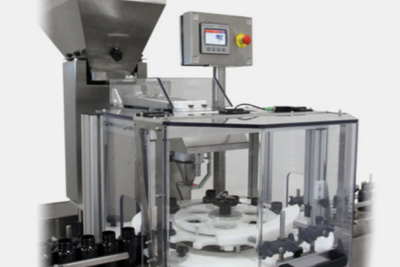 |
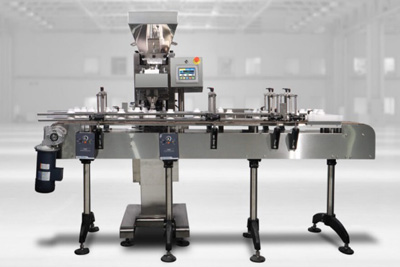 |
8.What is the Production line of a desiccant inserter?
The production line of the desiccant inserter is composed of multiple sets of equipment. We have described the enlisted machines one by one with their importance.
Machine 1: Container/Bottle Unscrambler
To begin the process, your packaging containers must be in an aligned position following an upright face. This is helpful in the fast counting and filling process. A bottle unscrambler is a significant machine that ensures your bottles or containers can be subsequently provided in a corrected position. This machine follows easy working by using vibration and high air blowers to arrange random bottles in a single step.
Machine 2: Counting and Filling Machine
Step 2 belongs to the major category of packaging where a counter and filler can detect the products and insert them into the container; both actions take place simultaneously. The counting and filling machine works with highly advanced sensors and software equipped inside the machine that can rapidly detect the presence of packaging products and items to be packed. Such as tablets, capsules, beads, beans, etc.,
Machine 3: Desiccant Inserter
Some manufacturing lines use this step before counting and filling machines. As mentioned above, this is essentially important to add the machine to minimize workload and maximize production speed. The machine working principle is also based on detectors and movable supporting rollers that facilitate the desiccant strip once the sensor detects the presence of the container.
Machine 3: Capper
This is also known as a capping machine that helps in securing the bottles/containers/pouches and other relevant products. Machine pick the cap and twist it around the neck using strong grippers and torque to firmly close the product.
Machine 4: Induction Sealing Machine
Once the bottles/containers are received from the capping machine. It becomes tamper-evident foiled by using an induction sealing machine that radiates electromagnetic radiation which warms the inner lining of the cap which melts and adheres strongly around the neck upon cooling and preserves the freshness till the user opens it.
Machine 5: Labeling Machine
This is an important step as helps in improving, boosting, and identifying your brand and product. A labeling machine with the help of hot-melt glue, wet glue, or self-adhesive application can apply the label over the surface of the product that is mentioned with important messages, information, or logo about the product and company.
9.How to clean and maintain a desiccant inserter?
Cleaning of Desiccant Inserter
| Regularly wipe off extra remnants present on the machine’s surface, debris around the supporting joints, rollers, and around the sensor. |
| For dusting, use a dry cloth and compressed air. |
| For sticky material, or rupturing of silica pack, ensure using detergent cloth first followed by compressed air and blower to confirm surface is fully hygienic and cleaned. |
Maintenance of Desiccant Inserter
| For maintenance, always follow regular lubricating schedule for movable parts of the machine, such as conveyor, joints, supporters, feeding suppliers, etc. |
| Keep monitoring and replacing worn out plug, electrical connections for safety. |
| Re-calibrate the machine’s setting regularly to avoid interruption, downtime, and irrelevant hanging or freezing of the system. |
| Adjust and observe the alignment of the conveyor and other supporting parts. |
10.What Are Possible Problems and Solution Of A Desiccant Inserter?
Whether purchased from good sources or not; every machine strikes with some technical problems. Though, it doesn’t mean equipment is not good, but you need to know how to troubleshoot the basic complications. Discussed below are some very common and easy issues that can be tackle if you’re familiar with the machine. For example:
| What to do if the machine cuts the strip inaccurately or incorrect?
|
This is the major problem when machine doesn’t separate the packs correctly that results in the tearing of the packet and gel beads can pop out, this results in rejection of the batch.
To solve this problem, you can align the desiccant strip properly around the guide supporters and re-evaluate if fixation is correct. Calibrate the machine and determine the sensor functionality. Check the strip speed and cutting time; both should be followed timely. |
| What should you do if desiccant strip is blocked in desiccant inserter?
|
The blocking or jamming of desiccant strip is not an uncommon condition. The packet mostly gets freeze inside the system that ultimately interrupt the whole process.
To solve this problem is pretty easy. You just must reset the whole process. For example, first clean the system and adjust the desiccant film properly. Check and regulate the speed of feeding supplier and re-connect the film over feeding roller, guide plate, and supporting roller and assess if it can move easily or not. Run the test and proceed the production. |
| What to do if two desiccants Inserted instead of one?
|
This condition is known as overdose or under dose. Each container is dealt with placement of either two or none of the desiccant material. To cater this situation; determine the setting of sensor. This is because it is unable to detect the presence of bottle or speed of the feeder supplier is more that can’t be manageable by the system hence result in over-cutting or over-dosing. Hence, cleaning of sensor and calibration of entire system can correct the set-up. Plus, slow down the speed of feeder supplier to regulate the movement of desiccant strip. |
11.What are the tips for purchasing a right desiccant inserter?
Before investing in a desiccant inserter machine, consider the discussed points and determine how suitably it fits into your growth plans of production line.
Determine the Nature of Machinery
Picture Courtesy: ABOXautomation
Always take a sensible step when opting a machine by replacing the manual to semi-automatic and later automatic can help in speeding up the entire process. Moreover, determine if the new addition of desiccant inserter support your production machineries or not.
Enlist Necessary Points
Picture Courtesy: Moneycontrol
By expanding the packaging line is definitely a complex task, for that must enlist the essential requirement when selecting the machine. For example, conveyor and accessory needs to arrange along with machine and investigate how it will run the faster packaging process.
Reliable Manufacturer
Picture Courtesy: Baltimore Innovation
This is the key point that must be determined before purchasing the machine. The reason behind is, a reliable manufacturer can cater all your problems efficiently and promising services. If you’re worried about post-sale services; then trustworthy companies like Allpack is the right answer who strives hard to maintain their client's expectations and profitability.
Your Budget
Picture Courtesy: Wisesorbent
This is the most important aspect when buying a desiccant inserter. Today, you can find user-friendly and advanced machines on such an economical budget. Remember, always check the company’s and product’s reviews prior to making a purchase.
Conclusion
Indeed, a desiccant inserter is a valuable asset behind a company’s profile, profitability, and customer trust. Good packaging is the direct way to reach the customer’s heart. Similarly, a desiccant inserter can do this job very well; Allpack offers automatic packaging lines and accessories with complete customer and post-purchase services. Contact Allpack now to avail worthwhile services.
Don't forget to share this post!
CONTACT US
Tell us your raw material and project budget to get quotations within 24 hours.
WhatsApp Us: +86 181 7101 8586
The Buyer's Guide
